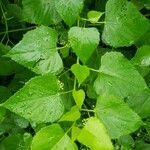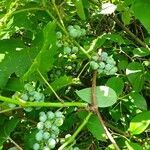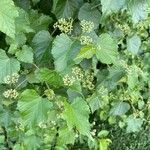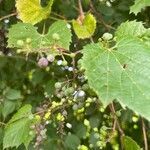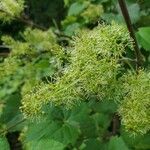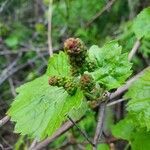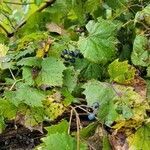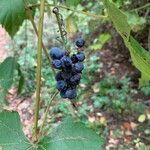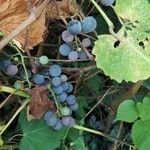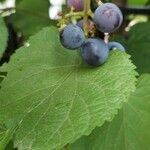High-climbing vine, the pith interrupted by nodal diaphragms 2–5 mm thick; twigs terete; lvs rotund in outline, 5–15 cm, lobeless or slightly 3-lobed (the lobes ± divergent), coarsely serrate (the teeth mostly wider than high, with one or both sides convex), pubescence beneath when young and persistently so in the vein-axils; infls long and slender, loosely fld, 10–15 cm; fr black, not glaucous, 5–10 mm; raphe carried over the end of the seed as a distinct raised ridge; 2n=38. Woods and thickets; N.J. to s. Wis. and Neb., s. to Fla. and Tex. (V. cordifolia)
A vine. It can grow 25 m long. The leaves are alternate and heart shaped. There is a tendril after each third leaf. The fruit is round and acidic. It becomes sweet after frost. They are small and purple.
